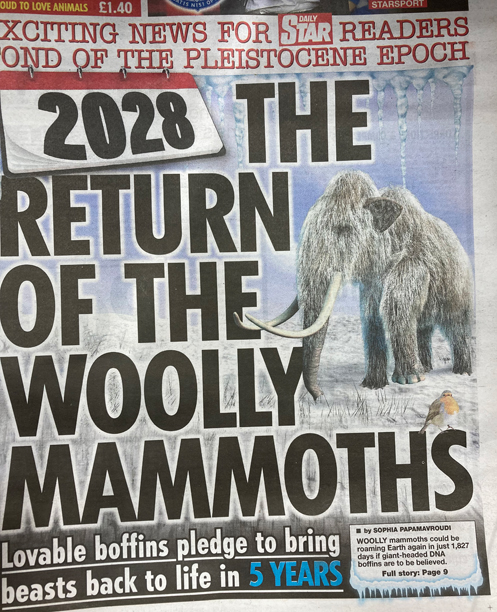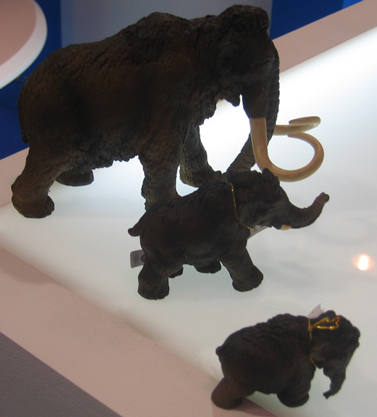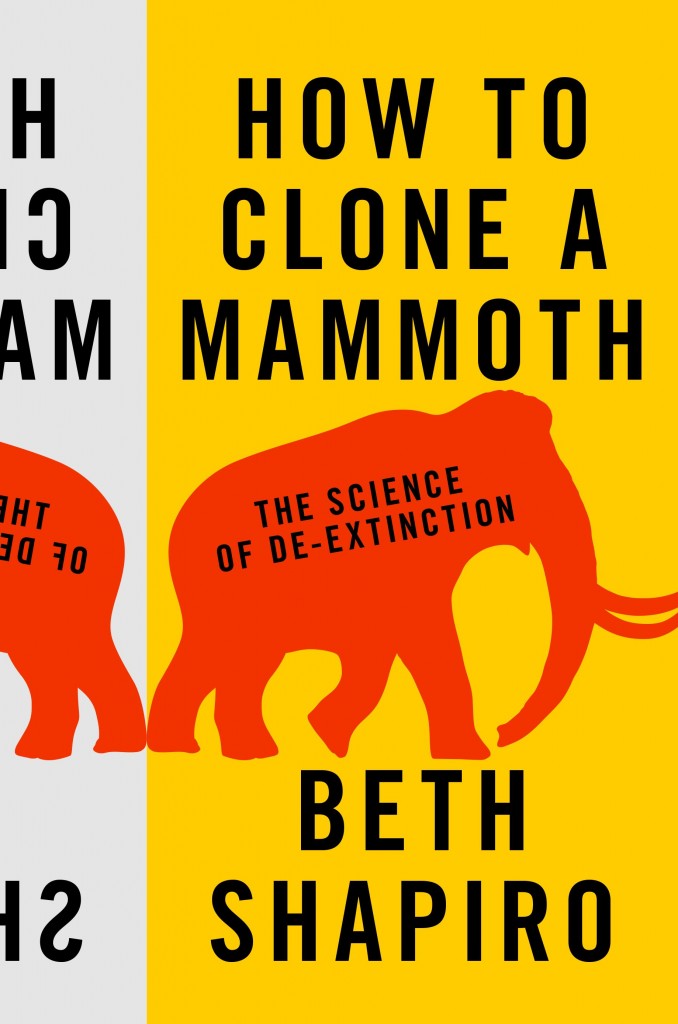Lovable Boffins Pledge to Bring Back the Woolly Mammoth
The Woolly Mammoth could return by 2028 according to an article published in a UK tabloid paper. The sensational headline claims that the extinct prehistoric elephant could be resurrected. Advances in genetic engineering could mean that extinct creatures could be coming back.

Picture credit: Everything Dinosaur
Woolly Mammoth De-extinction
Everything Dinosaur has featured several stories about de-extinction on this blog. One of the most recent concerned genetic research to resurrect the Thylacine, otherwise known as the Tasmanian Tiger. As a marsupial the significant problem of having to find a surrogate mother can be bypassed.
To read the Thylacine article, which is based on a media release from the University of Melbourne: The De-extinction of the Thylacine.
There would be many additional barriers to the genetic engineering of a viable Woolly Mammoth embryo. It is true that astonishing and rapid developments in genetic engineering could in theory bring back long extinct creatures. The resurrection would be achieved through the manipulation of an organism’s genome. This would result in the creation of a population of animals that had characteristics of animals that have died out. We are sure the article would have mentioned dinosaurs, but a “Jurassic Park”, is not going to be created anytime soon.
In 2015, Everything Dinosaur reviewed a book which provided a guide to cloning a Mammoth.
To read our review of “How to Clone a Mammoth”:“How to Clone a Mammoth”- Book Review.
Cloning Prehistoric Elephants
The book was written by Beth Shapiro, an Associate Professor at the University of California, Santa Cruz. It looked at the selection criteria for a de-extinction candidate species. She explained the joys and perils of hunting for Woolly Mammoth fossils and highlighted some of the scientific obstacles associated with cloning. There are ethical and moral considerations too. Should we bring back and animal that went extinct thousands of years ago, or perhaps focus on conserving extant fauna and flora.

Picture credit: Everything Dinosaur
The picture (above) shows Papo Mammuthus primigenius figures, spotted at a trade show a few years ago. The baby Woolly Mammoth model has been out of production for some time, but the juvenile and adult figures are still available.
To view the Papo prehistoric animal figures in stock: Papo Prehistoric Animal Figures.
Whatever the advantages and disadvantages of this aspect of genetic engineering, we did not expect to see a tabloid newspaper covering this research on the front page. We are not sure about the headline “lovable boffins…”.
We look forward to reading about the re-introduction of prehistoric elephants in 2028.
The Everything Dinosaur website: Everything Dinosaur.


